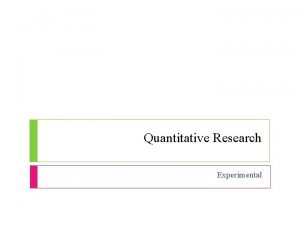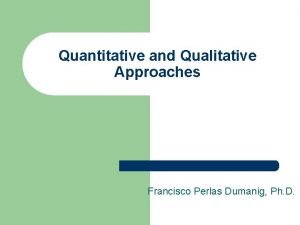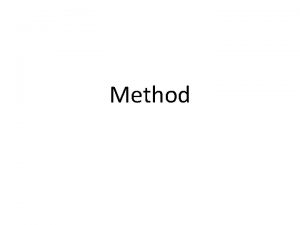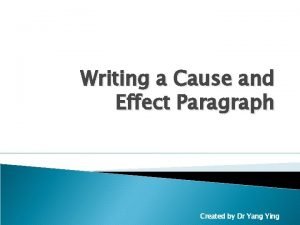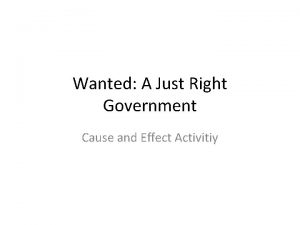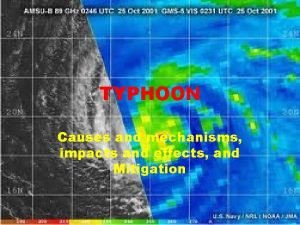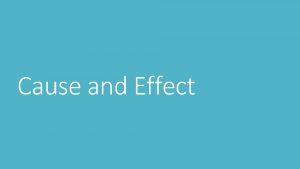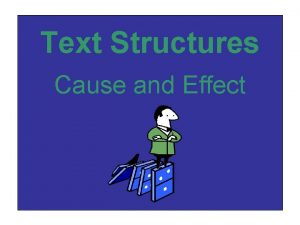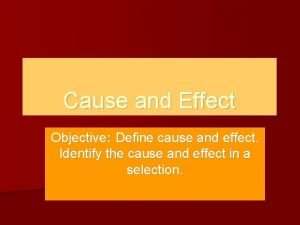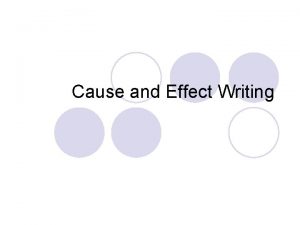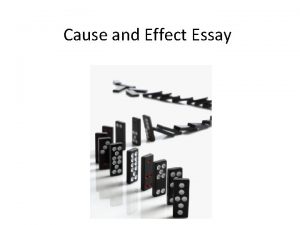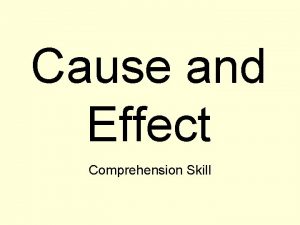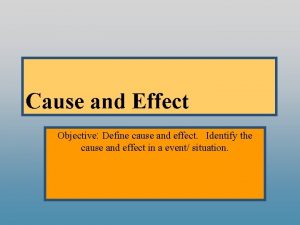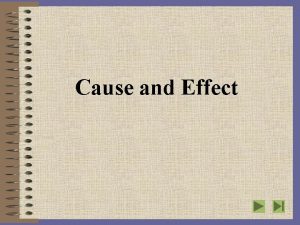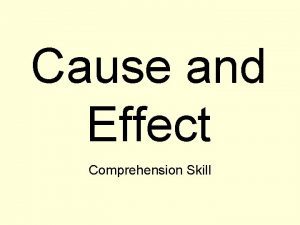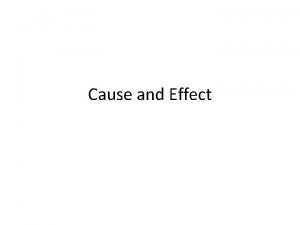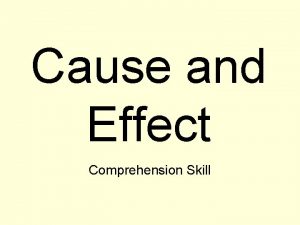Quantitative Research Experimental Experimental Research Cause and effect


















- Slides: 18

Quantitative Research Experimental

Experimental Research Cause and effect relationships are established by manipulating the INDEPENDENT variable(s) and observing the effect on the DEPENDENT variable. Research design must control for the possible effects of extraneous variables that could mask, enhance, or in some way alter the effect of the independent variable on the dependent variable.

Example: General study description: Recruited obese participants will spend 3 weeks in a tightly controlled laboratory setting Dependent Variable: Weight Loss Independent variable: food intake Independent variable: exercise regimen

Internal & External Validity Internal Validity: determined by the degree to which the observed effects of the independent variable (IV) are REAL and not caused by extraneous factors Alternative explanations for the effect of the independent variable (IV) on the dependent variable (DV) threaten internal validity KEY: controlling for the possible effects of extraneous variables

Internal & External Validity: determined by the ability to generalize the study results beyond the study sample

Threats to Internal Validity alternate History Maturation(children) Testing Instrumentation Selection bias explanations Mortality/attrition Hawthorne Placebo blind vs. double blind Implementation fidelity

Control Strategies Threats to Internal Validity Randomly select participants from a well-defined study population Randomly assign selected participants to groups Include non-treatment control groups in the research design

Final Point on Int/Ext Validity External validity can not exist without internal validity If the results of the study are not internally valid, there is nothing to generalize. Researchers should be always be concerned about ensuring internal validity first.

Choosing a Design Identify and use a design that… Controls as many extraneous variable as possible Will still be practical and feasible to implement

Experimental Designs X =independent variable (the treatment) X 2 or Y = additional treatments O = measurement of the dependent variable (an observation) Each observation or measurement is numbered indicating order (O 1, O 2, O 3 ) R = random assignment Hawthorne effect

Examples of Types of Randomization (Jacobsen, 2012, figure 13 -6)

Non-experimental Designs Survey research designs Cross –sectional Longitudinal Trend studies –track population changes over time Cohort study – follow a particular group or subgroup over time Youth Risk Behavior Survey (YRBS) http: //www. cdc. gov/Healthy. Youth/yrbs/pdf/us_injury_trend_yrbs. pdf National Longitudinal Study of Adolescent Health (Add Health) http: //www. cpc. unc. edu/projects/addhealth/design Panel study – examine the same group of people over time at the individual level Panel Study of American Religion and Ethnicity (PS-ARE) http: //www. ps-are. org/index. asp

Framework for a Cohort Study (Jacobsen, 2012, figure 12 -2)

Non-experimental Designs Correlational study Identifies relationships and the degree or closeness of those relationships A correlation exits if, when one variable increases another variable either increases or decreases in a somewhat predictable way. What is the relationship between participation in intramural sports and BMI among WOU students? What is the relationship between religiosity and age of sexual initiation in seventh grade students?

Types of Relationships Linear relationships Positive: both variables move in the same direction (one variable increases as the other increases) Negative: one variable moves in the opposite direction of the other (one variable increases while the other decreases) Curvilinear relationships

Assessing correlation Rough measure = scatter plot Statistic = correlation coefficient or r (describes a sample of paired values from two different variables) Measures the closeness with which the pairs of values fit a straight line Range of values for r = +1. 0 to -1. 0 When r = 0, there is no correlation 1. 0 = perfect correlation

Interpreting a Scatter Plot Line of best fit http: //staff. argyll. epsb. ca/jreed/math 9/strand 4/scatter Plot. htm

Relationships cause & effect Correlation of ice cream sales and death by drowning (r = +. 86) In the months when ice cream sales go up, so do deaths by drowning and likewise when ice cream sales go down, so do deaths by drowning A. ) Does ice cream consumption cause drowning deaths to increase? or B. ) Do drowning deaths cause surviving family members and friends to eat more ice cream?
 Experimental cause and effect
Experimental cause and effect Non experimental quantitative research
Non experimental quantitative research What is research design
What is research design Experimental vs non experimental research
Experimental vs non experimental research Ter thin client
Ter thin client Ultimate cause of behavior
Ultimate cause of behavior Proximate and ultimate causes of behaviour
Proximate and ultimate causes of behaviour Kinesis and taxis
Kinesis and taxis Experimental vs non experimental
Experimental vs non experimental What are the 5 types of non experimental research design
What are the 5 types of non experimental research design Experimental vs nonexperimental research
Experimental vs nonexperimental research Nonexperimental study
Nonexperimental study Research paradigm example
Research paradigm example Research instrument in experimental research
Research instrument in experimental research Paragraph showing cause and effect
Paragraph showing cause and effect Wanted a just right government cause and effect answers
Wanted a just right government cause and effect answers Immature stage of typhoon
Immature stage of typhoon Whats a text structure
Whats a text structure Chronology words
Chronology words
